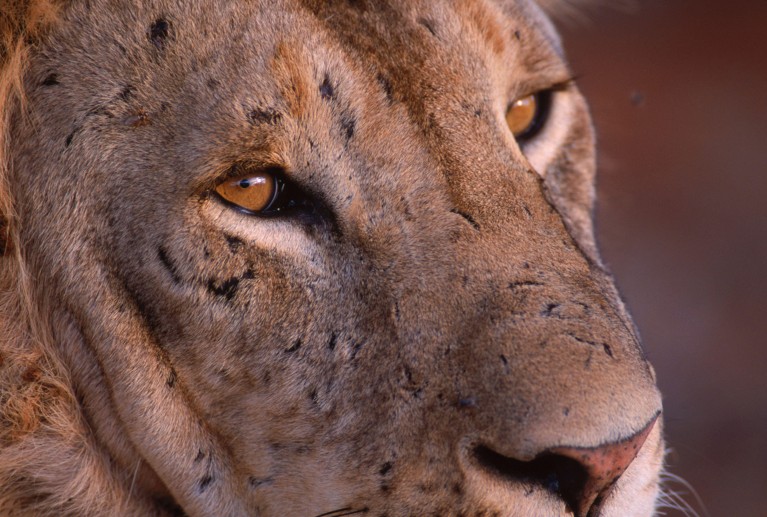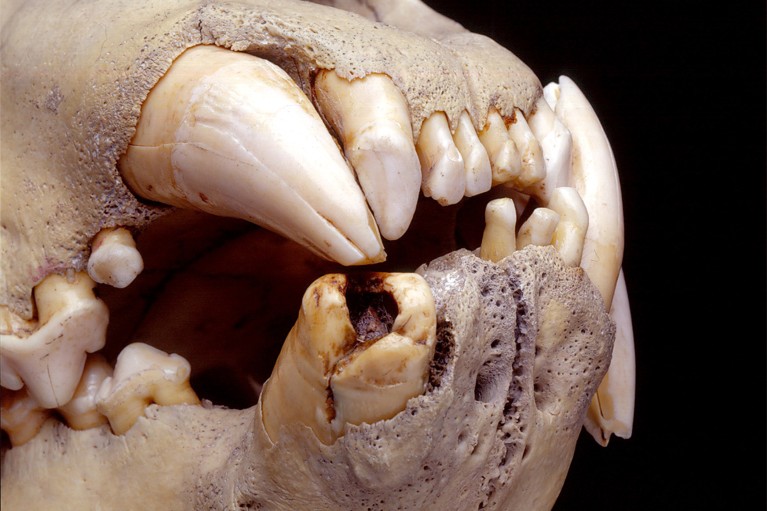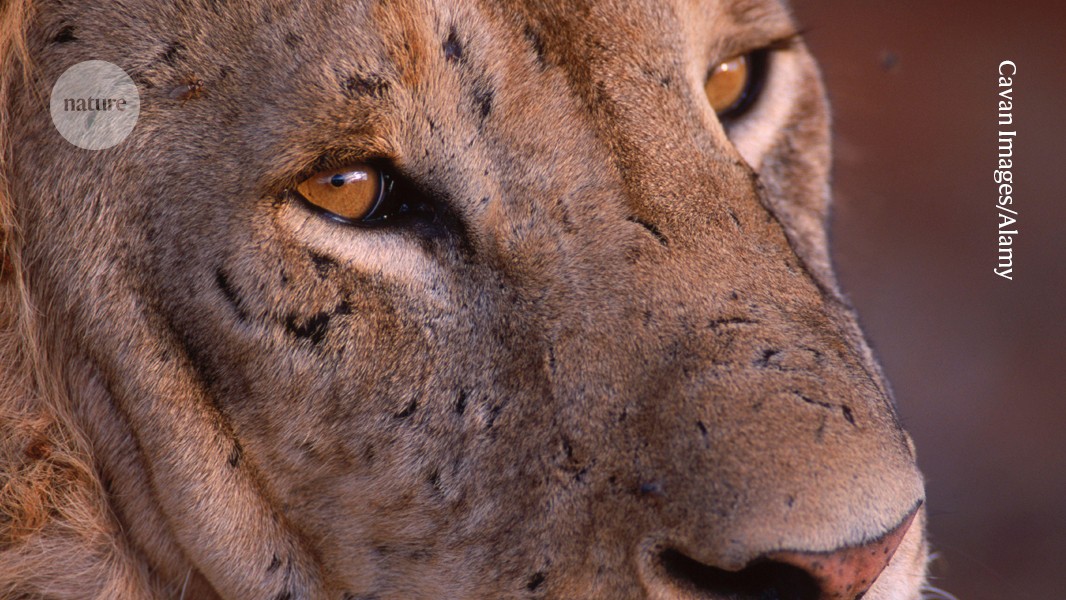
A maneless lion from Kenya. Two maneless lions nicknamed the ‘Man-eaters of Tsavo’ preyed on railway workers in Kenya during the nineteenth century.Credit: Cavan Images/Alamy
Hair found wedged in the broken teeth of famous lions killed in the nineteenth century offers a glimpse of their diet — which included humans1.
Few wild lions (Panthera leo) are as well-known as the ‘Man-eaters of Tsavo’, two large maneless males that terrorized workers constructing the Kenya–Uganda Railway until they were shot by a railway administrator, lieutenant-colonel John Henry Patterson, in 1898. The exact number of their victims is unknown, but they probably killed at least 31 people near the Tsavo River in Kenya2.
The Tsavo lions ended up on display at Chicago’s Field Museum in Illinois, and by 2001, thousands of hairs had been extracted from a cavity in one of their teeth. At the time, the best he and his colleagues could do was look at the hairs through a microscope.
Ancient-DNA advances
However, “ancient DNA has come a long way”, says co-author Ripan S. Malhi, an anthropological geneticist at the University of Illinois at Urbana-Champaign. “You no longer need a follicle cell on a hair” to extract and read the DNA. “You can do it from the hair shaft itself.” Using these techniques, Malhi and his colleagues have identified hair from giraffe, oryx, waterbuck, wildebeest, zebra and human in the sample. Their report was published today in Current Biology.
The wildebeests were the biggest surprise. There were no wildebeests near the site of the railway worker’s camp, says co-author Alida de Flamingh, an evolutionary biologist at the University of Illinois at Urbana-Champaign. The closest herds were 90 kilometres away. So “either these lions were roaming across larger areas, or, historically, wildebeest did occur in the Tsavo region”, de Flamingh says.

Hair trapped in the broken tooth (pictured) of one of the Tsavo lions yielded DNA from the great cat’s prey.Credit: Field Museum of Natural History in Chicago
Although the researchers could do further analyses to uncover more information about the human DNA, they included minimal detail about it in their published paper. The next step will be “working with the local community and the local institutions”, Malhi says. “There are potentially descendants, or a descendant community that may or may not want this type of analysis done, or maybe they do — we just don’t know yet.”
Graham Kerley, an ecologist and lion specialist at Nelson Mandela University in Gqeberha, South Africa, says that the list of species whose DNA is lingering in the predator’s teeth isn’t particularly surprising. For him, the real takeaway is the importance of preserving biological specimens so that they can be reanalysed as tools improve over time. “Patterson, when he shot these lions, he had no sense of the incredible information that would emerge a hundred odd years later,” Kerley says.
That’s exactly the message that the researchers wanted to send, de Flamingh says. “We hope that other folks will try to apply the methodology that we developed here to study prey ecology or histories of other animals — even extending further back to extinct species.”


